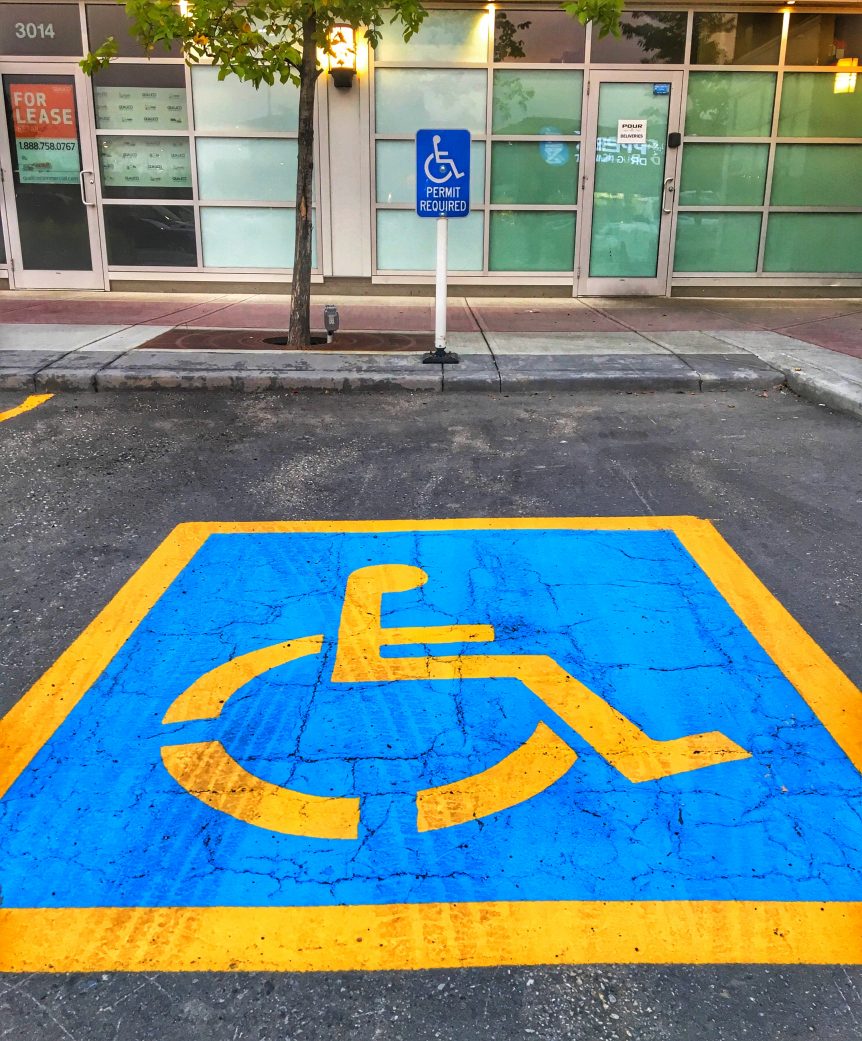You see it as you pull into the parking lot. The ideal parking spot that is just sitting empty in close proximity to the entrance of the building and you can’t believe no one has occupied it yet. The former occupants must have just left. It’s your lucky day. It’s like a mirage on the Sahara Desert.
Racing toward this glorious vacant spot, in hopes no one beats you to it, you throw on your signal light in a symbolic gesture that you are claiming this spot as yours, like a dog marking his territory. Beginning a sharp turn into the parking stall at break-neck speed, you come face-to-face with…. the international symbol of access.
Disappointment immediately sinks in and you begin to have that internal argument with yourself as to whether it’s really going to matter if you park there or not. “It’s only going to be for 5 minutes while I quickly run in to do my business. What are the odds someone is going to come along and actually NEED that spot? Most of the people that use those spots don’t appear to have a disability anyway”.
Having justified it in your own mind, you shift into park, turn off the ignition and wander in to do your shopping. Congratulations! You have just joined the ranks of the Self-Centered Dud Club. (There are stronger words but this is an all ages, family oriented blog.)
There is definitely further conversation required in regards to business vehicles parking in accessible stalls while the employee enters the building to conduct their duties. There have been several instances of this occurring and being captured in various forms of media. Everything from the postal service, to couriers, delivery drivers, armoured trucks, and the list goes on. Time is money in the corporate world and it would appear many corporations are willing to gamble with parking illegally in accessible stalls.
Taylored Accessibility has heard from former employees of these corporations, “My supervisor told me to save time by using the parking spot closest to the entrance, even if it is an accessible stall, and if I get a ticket, they’ll pay it”. Clearly, company policies have drifted vastly from the days of social responsibility toward the communities in which they serve.
Often, when individuals are called out for illegally parking in an accessible stall, the violator becomes irritated, verbally abusive, and in extreme cases physically abusive too. How’s that for a sense of entitlement?
Whether driving a business vehicle or driving a personal one, there is an obvious need for an attitudinal shift in the way we look at accessible parking stalls. It doesn’t matter how long you planned to be occupying the stall or the reason for it. The odds of someone needing that spot are irrelevant, as nobody is taking bets and you’re not in Vegas. You’re in a parking spot that you have no business occupying.
Whether you think the people that use those spots are actually disabled or just lazy is also irrelevant. If there is a permit in the window, that person went through a scrutinous application process that includes receiving verification from a health professional that there is sound medical reason for the individual to park closer to the entrance. In fact, one of the criteria for acquiring an accessible parking placard is the applicant cannot or should not walk more than 50 meters without assistance or is at risk of further injury if they do.
If you see an individual “walking perfectly fine” it is more than likely the individual’s condition fluctuates in intensity and they are having a successful moment or perhaps even having a good day. Let’s be happy for them, leave the judgments of medical necessity to the medical professionals, and move along to one of the other parking spots available.

